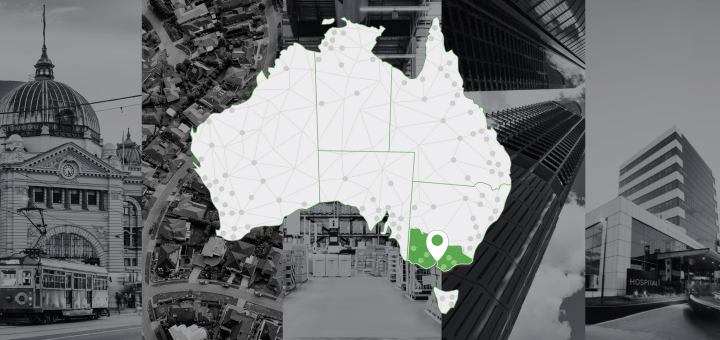BLOG
Resources to help you prepare a competitive BBRF grant application
Resources to help you prepare a competitive BBRF grant application
The federal government has just opened round four of the Building Better Regions Fund. $200 million of funding is now available and is aimed at helping drought-affected communities.
One of the key challenges we’ve seen in each of the previous rounds is councils struggling to prepare an evidence base for their application within the short timeframes available. With just five weeks until the deadline for the 2019 round of funding, we’ve compiled this list of resources to help you prepare the strongest possible application for your project or initiative.
Applying for the 2019 round of BBRF funding? You might find these resources helpful
We’ve helped our partner councils in local government prepare an evidence base for funding in each of the previous rounds of BBRF (we helped secure $187 million in funding in the 2017 round alone). During those projects, we’ve developed the following suite of free and paid resources that you may find helpful if you’re preparing an application.
| Demographic resource centre | Our full database of local area profiles, national indicators, guides, eBooks and analysis from our team to help you to uncover the story that brings your application to life. | Open the demographic resource centre |
| Grant application guide | We share the model we’ve used to help our partners in local government secure Building Better Regions funding. The guide includes the four-stage framework and step-by-step instructions to help you locate the relevant information in our publicly-available local area profiles | Download a free copy of the grant application guide |
| Economic and employment impact modelling webinar | We will be running a webinar in the coming weeks to show you how to use the annual data in economy.id to demonstrate the year-on-year impact of economic and/or employment decline as a result of drought. This is a key assessment criterion for this round of BBRF funding, which we expect will feature prominently in successful applications. Click here to register your interest – we will be confirming dates and times soon. | Pre-register for the webinar |
| Tailored consulting packages |
Update: we’ve nearly reached capacity for BBRF support work, so please contact us immediately if you need assistance with this round. Looking forward, our team will be available in the new year and can help you with an independent cost-benefit analysis, economic impact modelling other work to help you present the economic evidence base for your local infrastructure or community project. Contact us via the form on this page to speak with a member of our economics team to discuss which option will best support your application. |
Contact our consulting team |
| Guidelines from the BBRF | BBRF guidelines contain all the details including the all-important assessment criteria for both Infrastructure projects and the Community stream |
What is Building Better Regions Fund?
The fund is focused on projects in Regional Australia with the aim to create jobs, drive economic growth and build stronger communities with a focus on helping drought-affected communities. Regional local governments can apply for funding up to $10 million. Funding is available under two streams:
- Infrastructure Projects Stream: will fund construction of infrastructure (new, upgrade or extension)
- Community Investments Stream: will fund community-building activities (e.g. events, strategic regional plans and capacity building activities)
To be competitive, projects must demonstrate strong economic outcomes, social benefit, value for money and deliverability. In this round, you also need to demonstrate the impact of economic and/or employment decline as a result of drought. A cost-benefit analysis is mandatory for all grant requests over $1 million.
Are you eligible?
Unlike previous BBRF rounds, your project must take place in a drought-affected location. To be eligible, you will need to prepare satisfactory evidence to support your claim. The evidence could include:
- projects located in a local government area that is eligible for the Australian Government’s Drought Communities Programme – Extension. See the list of LGAs eligible for that programme here.
- projects located in a locality drought-declared by the relevant state or territory government
- official Bureau of Meteorology rainfall data indicating an extended period without or with a significant decline in rainfall
- demonstrated impact of economic and/or employment decline as a result of drought
You should check the BBRF mapping tool to confirm the eligibility of your proposed project location.
When do applications close?
Applications for round four of the Building Better Regions Fund close on 19 December 2019.
How can we help?
Support your local insights with a strong evidence base.
The story of your community can only be told by combining your local knowledge with evidence. Our economic and demographic online tools are purpose-built for this. The tips below will help you use these tools and by doing so, uncover the story that brings your application to life.
Tips for preparing a competitive BBRF grant application
Ultimately, the ministerial panel who considered the applications awarded funding on the basis of economic and social benefit, value for money and project delivery criteria. However, these criteria simply set the ‘benchmark’ for an application. We asked our consulting team (who worked with a number of councils to develop applications), what made applications exceptional?
Quantifying outcomes
The feedback for applicants document released with the funding announcement clearly defines the evaluation criteria that was used to assess applications.
Economic benefit and social benefit criteria accounted for 70% of the weighting used to evaluate the merits of each application. Other criteria, such as ‘Value for money’ required a clear rationale as to why the project would be diminished without grant support.
The take out? Unsurprisingly, quantifying the forecast benefits of a project is essential.
Building the story
With so many applications, creating context is vital. Transforming a series of charts and tables into a narrative that tells a story of place, of change and of regional context isn’t easy, but it’s important. We’ve written previously about the power of storytelling to relay complex ideas and information.
Of the applications we worked on, those that were successful all had clear and compelling narratives about the interrelationships between the attributes of their place, their people, and their industries.
“Our community is youthful, but pockets of disadvantage have emerged, as evidenced by disengaged youth in areas x, y and z. We’re seeing lots of people leaving the area to work elsewhere, which is straining our transport infrastructure. We’ve also seen a downward trend in tourism, which has historically been a cornerstone of our economy, yet the tourism industry has grown nationally, so we’ve identified it is a local issue.”
Our online tools are designed to support these kinds of narrative with detailed, local insights. However, for the occasional user, the volume of information can be overwhelming, and it can be hard to extract the story.
Grant application cheat-sheet
While we have some serious super-users in councils across Australia, the most experienced users of our local government tools are our own consulting team. As economists working for both local government and private sector clients, our consulting team understand the questions that need to be answered when developing compelling stories of people, industries, and places. As such, they are central architects in the development of our online tools – in particular, the economic modelling tools within economy.id.
Using this experience, the economic consulting team has built a cheat-sheet to lay-bare the methodology used to develop the applications that were successful in the previous rounds of the BBRF. This guide shows you the exact tables, charts, and tools we recommend using to tell a compelling story in grant applications. Think of it as your tour guide, as you dig-in to the swathes of information available to you.
You can download the grant application guide here, with step-by-step instructions for each step of the framework, to help you find the right data and craft a compelling narrative.
Tailored consulting packages
Experts in local area economies, demographics and spatial analysis, our consulting team can help you put it all together.
Setting the strategic context, identifying the economic need for your project
An in-depth analysis shows how your project aligns with the economic drivers of the region. The report draws together information from a range of sources including economy.id, profile.id, atlas.id and forecast.id to provide you with clear insights and analysis to support your grant application and take it to the next level. Your report will be tailored to build the story behind the numbers and strength your response to criteria 1:
- the extent to which your project meets the needs of the regional community
- the broader economic benefits that your project will deliver for the region and community during and beyond the term of funding
Independent economic modelling
.id’s economic evaluation framework supports the preparation of business cases for State and Federal Government funding submissions. We provide councils with a detailed evidence base to support their business case, consisting of
- a Benefit-Cost analysis (including Benefit Cost Ratio and Net Present Value)
- Economic Impact Analysis and
- Wider Community Benefit Analysis.
From airports to major events and recreational facilities, we provide comprehensive benefit-cost analysis and economic impact modelling for a range of projects. Contact us here for more information about how we can support your upcoming application.
Rob Hall
Rob is driven by a desire to help shape communities for a better future. Trained as an economist, he has a unique twenty-year background in economics, demographics, statistics and strategic planning with a focus on understanding how economic forces influences local government areas across Australia. At .id, Rob provides Local Government with high-quality analysis and information tools, including specialised consulting services and tailored information products such as economy.id.









